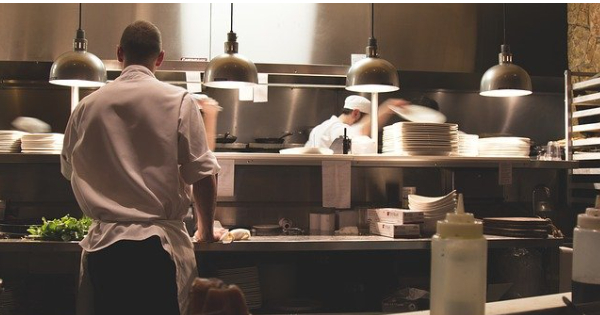Importance of Food Safety & What Are The Food Safety Pillars?(7 Pillars)
Table of Contents
Importance Of Food Safety:
The importance of food safety can be drawn from a wide scope of scholastic fields, including science, microbiology, and designing. These assorted ways of thinking combine to guarantee that food handling safety is completed any place food items are sourced, fabricated, arranged, put away, or sold. In this sense, food safety is a fundamental way to deal with cleanliness and responsibility that worries each part of the worldwide food industry. The accompanying article characterizes food safety in assembling and clarifies the importance of food safety for the worldwide food chain. Following a concise outline of the distinctive administrative bodies entrusted with assessing food safety around the planet, the article traces the vital importance of food safety guidelines, the historical backdrop of food safety, and the results of dangerous food taking care of practices and methodology for organizations and shoppers.

Food items are among the most-exchanged wares in the world. As business sectors become progressively globalized as time passes, and as the total populace keeps on developing, the worldwide food production network will just keep on expanding in scale and intricacy. Decisively on account of these megatrends impacting the large-scale manufacturing and circulation of food, food safety consistency has never been more significant. Each nation has diverse administrative bodies that direct the definition and authorization of homegrown food safety guidelines. To sell or make food items in some random nation, homegrown and worldwide organizations the same are dependent upon the food safety enactment and authorization proportions of that country.
Each country characterizes and sets up its laws and requirement rehearses for food safety guidelines, and these guidelines may fluctuate from country to country, and locally from area to district. Carrying a food item to an unfamiliar market requires consistency with the food safety and customer assurance laws of that country and its provincial legislative specialists. As a rule, global food safety principles are intended to encourage consistency with food safety laws in significant business sectors, working on the way toward getting the endorsement from unfamiliar administrative controllers. We profit by hundreds of years of logical and innovative advancement that have made a bounty of safe food and drink items something that large numbers of us underestimate. In any case, the idea of food safety as far as we might be concerned today, and the meticulousness with which it is implemented, is a generally new advancement in mankind’s set of experiences that are personally attached to changes in the manner we live and eat.
In 1905, American creator Upton Sinclair distributed his novel The Jungle, which included terrible portrayals of Chicago’s meatpacking industry. The following public shock drove the U.S. government to pass the Meat Inspection Act the next year, building up the main clean principles for butchering and butchering. This law denoted the first occasion when that food handling offices were dependent upon normal reviews and examinations by administrative specialists and a portion of the absolute first laws for food safety in assembling.
Across Europe and North America, the mechanical insurgency introduced the foundation of numerous administrative bodies and fundamental laws concerning food safety and assessment. As food creation turned out to be progressively automated and profit motivating forces climbed, laws were passed to forestall the deliberate offer of food items that were misbranded, defiled, or in any case messed with. It was during this period that fixings and added substances got subject to guidelines.
In the many years following World War II, electric coolers entered working-class homes across Europe and North America, changing the way that regular individuals bought and put away food. The time of home refrigeration started the quick development of modern food creation, just as a developing requirement for stricter food guidelines. It was in this changing food scene that Mars Incorporated turned into the main significant food producer to introduce metal identifiers in their offices in 1947.

What Are The Food Safety Pillars?
There are many food safety pillars. Following are some of the food safety pillars described below:
1.Clean Suppliers:
Any extraordinary catering business begins with great food. Your food providers should as of now have a food safety certificate measure set up, something which is particularly significant for high danger foods. Ensure that your providers follow HAACP rules for food safety and get some information about the strategies they follow. By beginning with incredible food, eliminates one piece of the tainting puzzle.
2.Sterile Preparation:
Planning food for catering is the same as getting ready food for any café. Representatives should adhere to standard food disinfection strategies like customary hand washing and utilizing gloves to evade cross-tainting. Foods defrosting for transport should be avoided crude foods and no wood should be utilized in the arrangement of food.
3.Clean Transport:
This is the interesting part for food providers. Hot and cold foods should be held at the appropriate temperature (Above 145 F for hot, under 40 F for cold) during transport and checked a while later to ensure they remained there. All food should be guarded in food holders and put away in an area that can be cleaned. The foods which are probably going to cross-debase ought to be isolated from one another during transportation.
4.Sterile Serving:
Temperature controls should be kept up all through the whole catering occasion, so caterers need to have the appropriate gear close by for that legitimate serving. Scraping dishes can keep hot foods at the correct temperature. All temperatures ought to be checked with a test thermometer at standard spans. Likewise, all serving dishes should have their utensils. Contingent upon nearby laws, a wheeze watchman may be utilized.
5.Preparing:
All staff and volunteers should be trained completely so that they can set optimum food temperatures, safety planning, and safe transportation. Supplemental classes and training may be required and provided for those accomplished inside the field, as the guidelines sometimes change a lot. Ensure that ‘not knowing’ is not an issue.
6.Full Menu For Food Allergy Checking:
One thing which cooks routinely experience is food allergens. On the off chance that potential, caterers should reveal the elements of the dish to the supporters, so they know about any possible responses. The workers likewise need to realize what is in each dish, and if any known allergens could cause a response.
7.Documentation:
At long last, you will need to altogether report all your food safety methodology and temperature checks. These not just affirm that your workers and volunteers are following their preparation, yet also give an approach to show a wellbeing auditor that you are adhering to neighborhood laws if you get reviewed. There are a few hotspots for cooking food safety check records that you can use as motivation.

Conclusion:
The importance of food safety and cleanliness is of the most extreme role for organizations, as it assists with shielding the soundness of purchasers from foodborne diseases and food harming. Food harming happens when food gets debased by microorganisms, infections, and different germs, causing the individuals whom to burn-through the polluted food exceptionally sick. Ordinarily, food harming can be treated at home within seven days, yet some of the time food harming can be not kidding and require critical clinical consideration. Hence, realizing how to shield customers from food harming is fundamental. The Food Hygiene Regulations 2006 lawfully requires food organizations to complete food errands securely and cleanly. It is an offense under the Food Hygiene Regulations 2006 to supply food to buyers which is destructive to wellbeing. Food organizations have an obligation of care when providing food to shoppers, and hence food safety is important.




